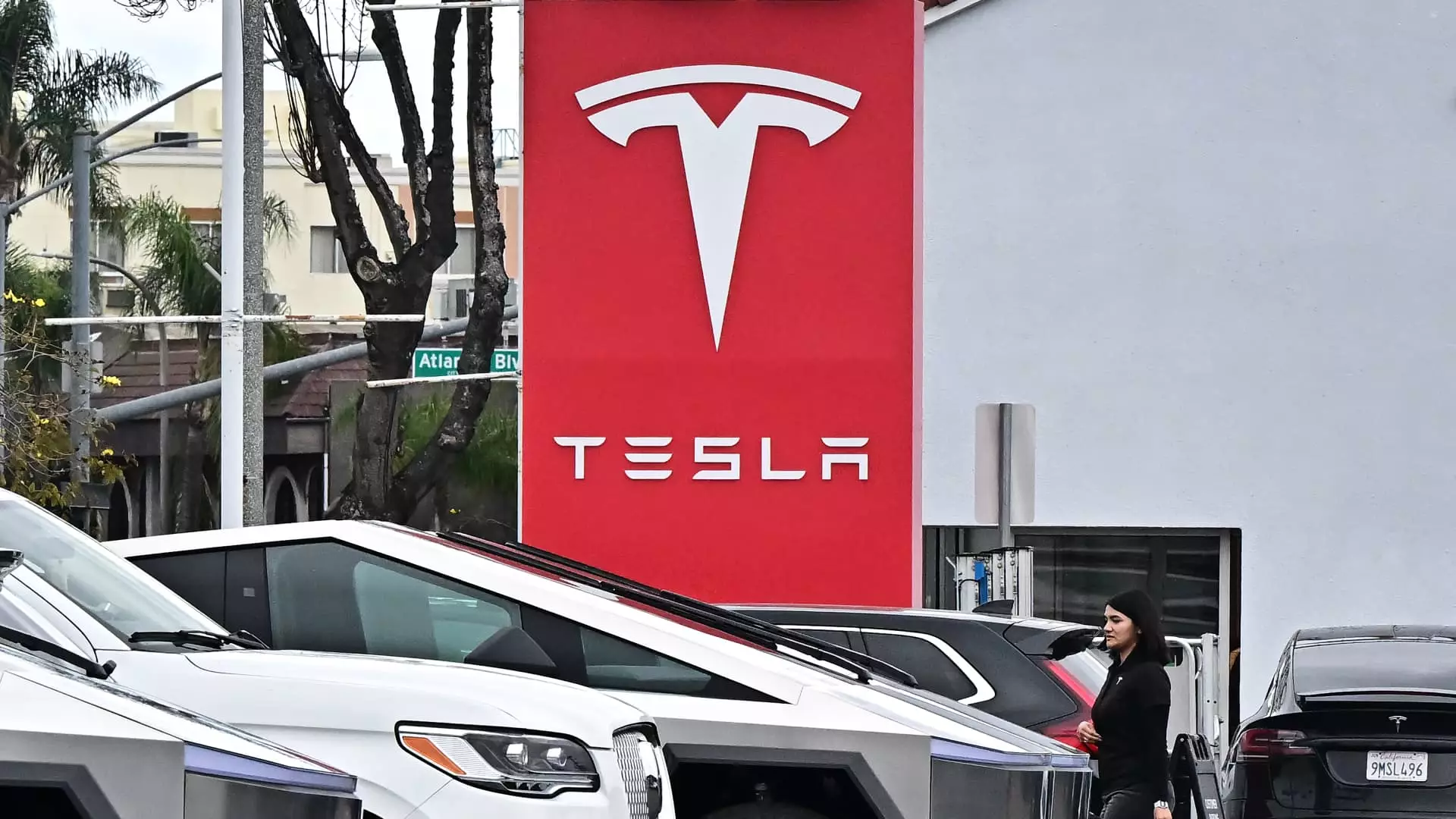5 Reasons Why Wall Street’s Tesla Predictions are Misguided

As we witness a seismic shift in the automobile industry landscape, it’s becoming clear that Wall Street analysts are faltering in their ability to evaluate Tesla amidst rising trade tensions and a changing political climate. Recent price target adjustments from major banks like Goldman Sachs, UBS, and Mizuho indicate a worrying trend of bearish sentiment that fails to account for Tesla’s potential as a transformative force in the automotive sphere. The troubling signal sent by these financial institutions raises questions about whether they’re equipped to offer sound judgments on a company that stands at the forefront of innovation.
Outdated Metrics and Narrow Perspectives
Analysts often rely heavily on traditional financial metrics to inform their decisions. UBS’s recent downgrade, which reduced the price target from $225 to $190, reflects outdated methodologies that overlook the disruptive nature of Tesla’s business model. UBS analyst Joseph Spak’s assertion that Tesla’s earnings projections remain too high suggests a misconceived understanding of the electric vehicle market’s trajectory. Tesla has not only dominated the EV sector but has also galvanized advancements across supply chains, setting new standards that extend beyond mere profit figures.
Goldman Sachs and Mizuho’s cautious stance similarly seems grounded in a conservative outlook that fails to grasp the disruptive innovation Tesla consistently introduces. Mizuho’s Vijay Rakesh, despite maintaining an outperform rating, still cut his target from $430 to $375. This half-hearted optimism reflects a reluctance to fully embrace Tesla’s long-term potential while focusing too heavily on immediate challenges.
Trade War Ramifications Unexplored
The ongoing trade tensions significantly impact numerous industries, yet Wall Street’s analysis makes it feel like a mere backdrop to Tesla’s performance. Tariffs on China-imported components may pose a risk to Tesla Energy, as Spak suggests, but the true measure of an innovative company lies in its adaptability. Tesla’s pivot to vertical integration, including in-house production and sourcing, places it in a robust position to absorb shocks from tariff disputes. Failing to account for Tesla’s agility reduces the severity of potential impacts from external pressures.
In fact, the trade war could inadvertently serve to strengthen Tesla’s market position. While competitors scramble to adapt to geopolitical uncertainties, Tesla’s established foothold in innovation may allow it to leverage any setbacks encountered by its rivals. Economic conditions will inevitably fluctuate, but Tesla’s iconic status and brand loyalty are assets that can’t be quantified simply by profit margins.
Consumer Sentiment: A Double-Edged Sword
Analysts cite weakening consumer confidence and auto demand, painting a rather bleak picture of the market. However, evidence suggests that consumer sentiment surrounding electric vehicles may be more complex than a linear correlation with traditional markets. In many ways, Tesla has redefined consumer expectations, not only in terms of automobile features but also in sustainability. The brand’s loyal following often supersedes traditional metrics; this phenomenon curates a level of resilience not accounted for in bearish forecasts.
In his analysis, Goldman’s Mark Delaney pointed to the existence of U.S. EV policy risk but didn’t fully engage with the growing societal demand for greener alternatives. As consumers increasingly prioritize sustainability, any perceived downturn in general auto demand may not directly threaten Tesla, which stands adorned as the paragon of eco-friendly engineering. The analysts appear to miss the fact that a commitment to innovation and environmental stewardship could bolster Tesla amidst economic uncertainties.
A Misguided Focus on Competition
Tesla’s most significant challenge lies not merely in its competitors’ ramped-up production capabilities, but rather in how it continuously reshapes the playing field. Mizuho’s recognition of potential share losses in the EU and China hints at a growing anxiety among analysts regarding competition. By underscoring competitor initiatives, they risk ignoring Tesla’s unique edge—innovation driven by an uncompromising vision. This is not an arbitrary race; it’s about mastering technology, customer experience, and sustainability.
The pessimistic outlook glosses over Tesla’s ability to innovate rapidly. The spotlight on barriers from competitors reflects an outdated narrative that could hinder investor perceptions of Tesla’s long-term prospects. Ignoring its leadership in clean energy advancements and AI would be an egregious oversight that fails to capture the broader shift occurring across the entire transportation ecosystem.
Final Thoughts: Innovators Will Prevail
It is time for investors to sift through the noise of Wall Street’s cautious analyses. Tesla’s position as an industry leader in the echelons of innovation contradicts the prevalent pessimism that is being thrust upon it. As the world mobilizes toward decarbonization and technological advancements reshape industries, overly cautious forecasts may distract from the reality that Tesla is precisely the type of company capable of weathering economic storms and driving the future forward. Amidst fluctuating markets, it is innovators, not merely traditionalists, who will determine the future of the automobile.





